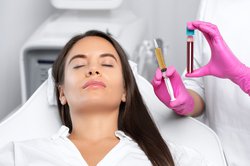
Playing the Long Game: Platelet Rich Plasma (PRP) Outperforms Steroid Injection for Treating Pain from Elbow Tendinitis
As a busy shoulder and elbow surgeon, one of the most common conditions I treat is elbow tendinitis, often referred to as tennis elbow or golfer’s elbow, depending on whether it involves the tendons on the outside or inside of the elbow, respectively.
Tennis elbow in particular can be an absolute showstopper. It tends to afflict people in the prime of their adult lives (ages 35-65), when they are busy with career and family responsibilities or gearing up for more free time with retirement and are eager to remain athletically and recreationally active. Tennis elbow affects about 5% of the adult population, and is characterized by pain on the outside of the elbow and loss of grip strength.
Here in South Florida, many of us participate in activities that can place us at risk for developing tennis elbow. As the name implies, golf, tennis and other racquet sports are often implicated, but so are weightlifting, intensive yard work or household chores, and jobs that require repetitive motions. I often see patients who develop tennis elbow after a day of heavy elbow activity that is not customary for them, such as putting up hurricane shutters, going on a ‘cleaning bender’, or packing up the house to come to Florida for the winter.
Most cases of tennis elbow are self-limiting, meaning the symptoms will go away without any formal treatment. For some people, the pain and dysfunction from elbow tendinitis are extremely debilitating and cause significant disruption in quality of life.
When a patient comes to see me for tennis elbow, I recommend wearing a wrist immobilizing brace as much as possible and at least during sleep until symptoms quiet down. Icing the sore area, oral anti-inflammatory medication, topical pain creams, and avoiding activity that aggravates the pain can also be helpful. Some patients may benefit from kinesiology tape (‘K Tape’), home stretching and strengthening exercises, or physical therapy. Two physical therapy treatment interventions that hold promise (though it’s too early to know for sure) are dry needling and blood flow restriction (BFR) techniques.
Sometimes even all of that is not enough. If you have seemingly tried everything and are at your wit’s end with pain from elbow tendinitis, you may wish to schedule a consultation to discuss platelet rich plasma (PRP) therapy. PRP is a FDA-approved treatment that involves using your own blood to deliver a rich concentration of molecules called growth factors to the painful tendons via injection. The cells in our body are on the same WiFi-like network through which they communicate with each other. When cells in our body pick up a signal from the elbow that has just been treated with PRP, this sets off a cascade of favorable chemical reactions that can help stop the damage in the tendons and potentially help repair them.
By contrast, steroid injections, a historically common treatment for tennis elbow, do absolutely nothing to repair the damaged tendons. In fact, steroids are catabolic, meaning they can cause further breakdown and damage of the tendons (not to mention discoloration or problematic thinning of the skin).
A recent meta-analysis (pooling and examination of data from multiple studies) published in the September 2023 issue of the Journal of Shoulder and Elbow Surgery showed that at3 and 6 months after treatment, PRP was superior to steroid injection with respect to pain relief and patient-reported function*.6 Even though the steroid injection seemed to give better pain relief at one month following treatment, the relief was short lived. I often see patients who experienced a few weeks to months of relief from a steroid injection received elsewhere, only to ultimately end up worse than ever.
Like the tortoise and the hare, being patient and choosing PRP over steroid injection for tennis elbow is often rewarded with better, more durable pain relief. In the long run, platelet rich plasma (PRP) is proving to be superior to steroid injections for treatment of tennis elbow. There is also mounting evidence to support PRP therapy for other conditions I treat, such as rotator cuff tears and early stages of shoulder arthritis.
If you have been dealing with pain from elbow tendinitis or any of these other conditions and are tired of having to ‘sit out the game’ or not being able to perform your job, we invite you to consider PRP. PRP is performed in the comfort and convenience of our office. The first visit will be to go over the procedure and the preparatory steps patients should take to optimize their chances of a good response (exercising, avoiding alcohol, stopping anti-inflammatory medication).
At the second visit, you will receive the treatment, which involves drawing your blood, spinning it down in a machine called a centrifuge that uses light waves to isolate a rich concentration of platelets, and injecting this concentrate in the vicinity of the damaged tendons. Patients should bring some reading material or a smart mobile device, since preparation of the blood takes approximately 25 minutes. You can expect to be at the office for approximately one hour. It is typical for patients to experience a period of discomfort after the injection. If you have a sling at home, you may wish to bring it with you to support the arm after treatment. If not, we will be happy to provide you with one. It’s important to keep in mind that most patients will not realize the benefits of PRP until 12 weeks (3 months) post-treatment. Remember, we are playing the long game!
I look forward to helping you get back to doing what you love!
written by: Veronica Diaz, M.D., Palm Beach County Shoulder Expert
*Patients enrolled in these 13 studies were selected at random to receive steroid injection or PRP, which helps reduce the risk of bias in the results.
